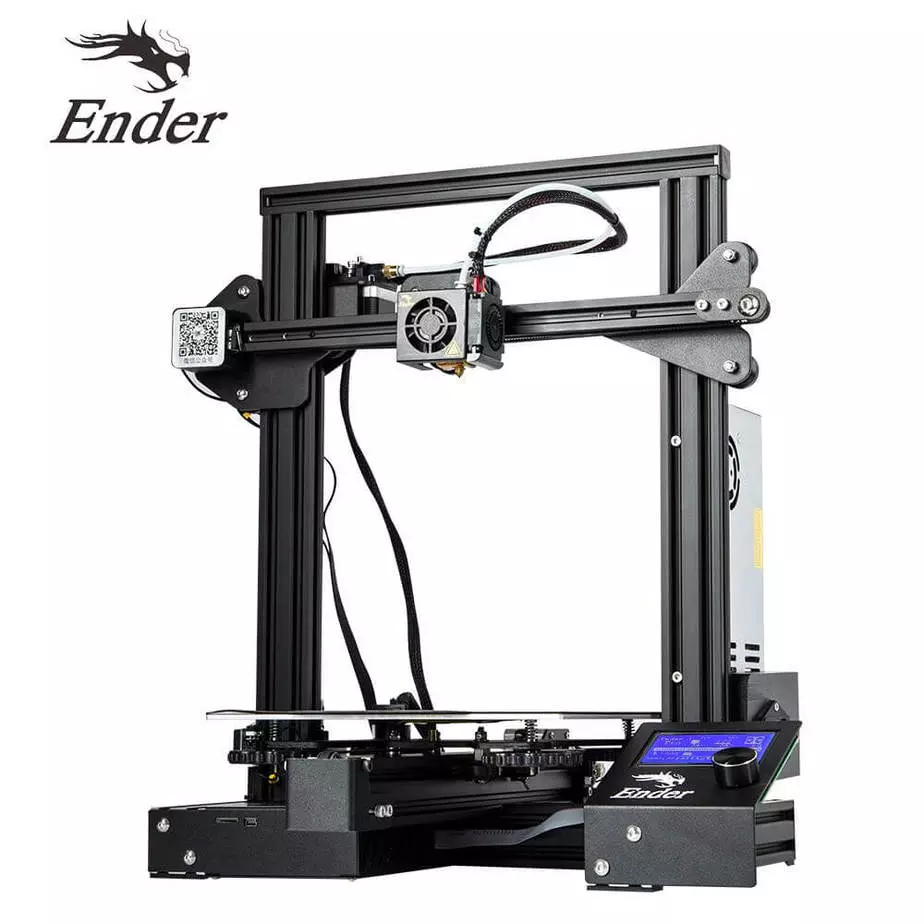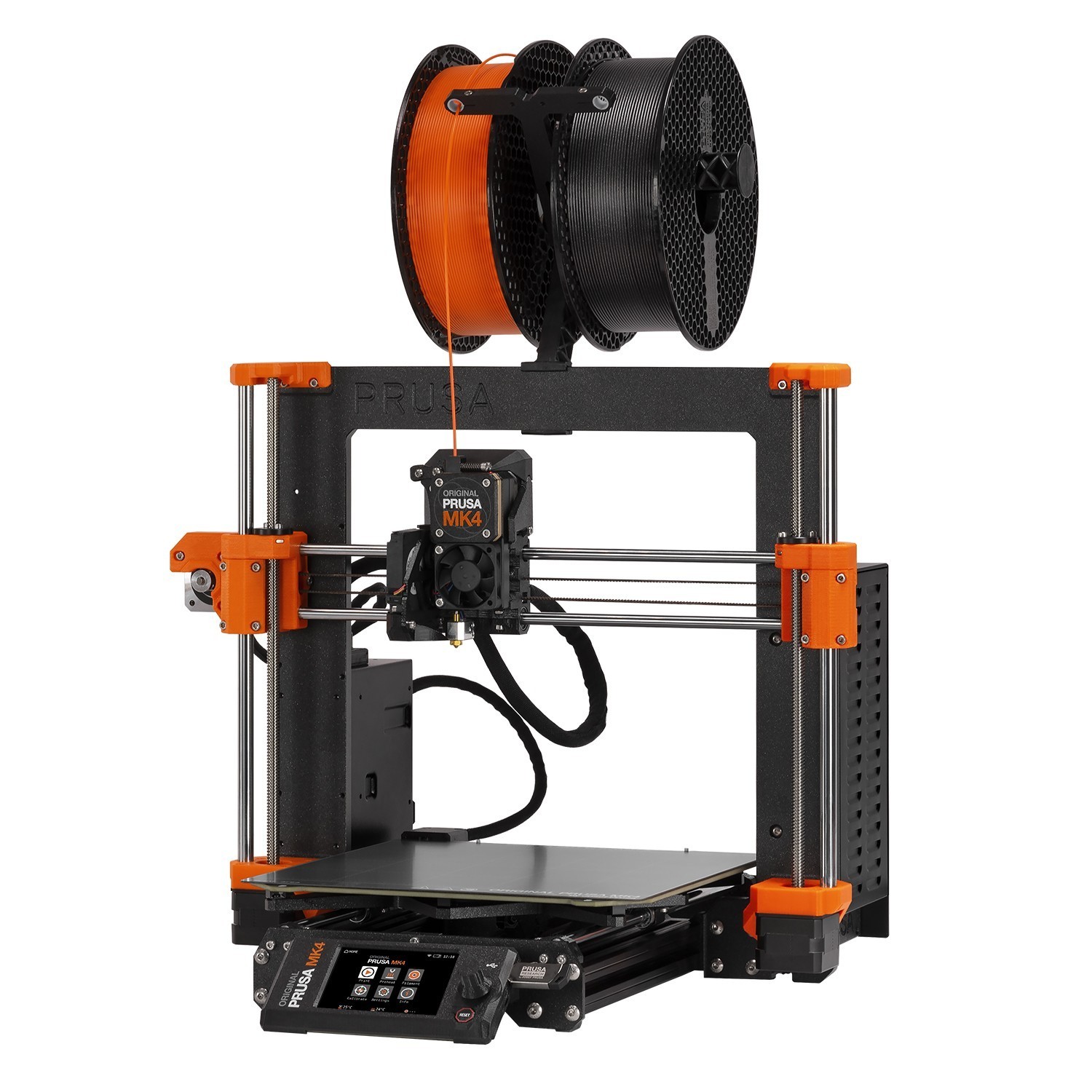Compare Ender 3 vs Ender 3 PRO vs Original Prusa MK4 3D Printer
Comparison between the best 3D printers
Choose the best 3D printer at the best price. The cheapest 3D printers are here.
Buy a 3D printer here with 3D Fila.
 |
 |
 |
|
| Model | Ender 3[BUY Ender 3] |
Ender 3 PRO[BUY Ender 3 PRO] |
Original Prusa MK4 3D Printer[BUY Original Prusa MK4 3D Printer] |
| Printing Material | Filament | Filament | Filament |
| Estimated price | $210,00 | $258,00 | $1099,00 |
| Fabricante | Creality 3D | Creality 3D | Prusa |
| Release Year | 2018 | 2019 | 2023 |
| Print Volume [mm] | 220x220x250 | 220x220x250 | 250x220x210 |
| Printer Size [mm] | 440x440x465 | 440x440x465 | 500x400x550 |
| Weight [kg] | 6,62 | 6,62 | 7 |
| Power Loss Recovery | NO | NO | YES |
| Enclosed printer | NO | NO | NO |
| Bed Leveling | Manual | Manual | Automatic |
| Filament End Sensor | NO | NO | YES |
| Bed type | Heated | Heated | Heated |
| Power supply system | Bowden | Bowden | Direct Drive |
| Standard nozzle | 0,4 | 0,4 | 0,4 |
| Maximum Nozzle Temperature [°C] | 255 | 255 | 300 |
| Maximum Bed Temperature [°C] | 110 | 110 | 120 |
| Maximum printing speed [mm/s] | 180 | 180 | 180 |
| Filament holder | YES | YES | YES |
| Camera for supervision | NO | NO | NO |
| Recommended filaments | PLA, TPU, ABS, PETG | PLA, TPU, ABS, PETG | PLA, ABS, PETG, PC, Nylon, Tritan, PP |
| Recommended slicers | Cura, Simplify, Slic3r | Cura, Simplify, Slic3r | Cura, Simplify, Slic3r, IdeaMaker, PrusaSlicer e outros |
| Maximum Resolution [mm] | 0,1 | 0,1 | 0,1 |
| Processor | 8 bits | 32 bits | Custom 32-bit xBuddy electronics with STM32 |
| Display | Mono | Mono | Display touchscreen 3,5'' |
| Power Supply | 24V / 270W | 24V / 360W Meanwell | 240 W |
| Connectivity | SD / USB | SD / USB | USB / Wi-Fi / internet via Prusa Connect |
| Operating systems | Windows, Mac, Linux | Windows, Mac, Linux | Windows, Mac, Linux |
| Date of registration in the system | 2021-04-13 | 2021-04-14 | 2023-06-06 |
| Release date | 2018 | 2019 | 2023 |
| Extra features | The Ender 3 V1 is a DIY assembly 3D printer, a sales leader since 2017, standing out for its cost-benefit. With a wide printing capacity, it has a CNC machined structure for precision and stability. It offers high-precision prints with low noise, thanks to its innovative V-profile and pulleys. It has a self-adhesive magnetic platform for easy removal of models and excellent adhesion. The Ender 3 heats up quickly, reaching 100°C in 5 minutes, ideal for agile prints. It includes protection against power failures, allowing you to resume printing after interruptions, saving time and material. | The Ender 3 Pro stands out for its beginner-friendly assembly and easily modifiable structure. With a 350W power supply, it heats up quickly and has a simple application that offers good print quality. However, its motors and fans are noisy, and the interface seems outdated. Assembly is accessible, without the need for advanced techniques, and it has integrated belt tensioners. It includes a detailed guide and supports microSD card and USB. | The Original Prusa MK4 stands out with automatic first-layer calibration via Loadcell sensor, high-speed enabled by Input Shaper and Nextruder for precise prints. It includes quick-change nozzles, customizable UI, and Ethernet/Wi-Fi connectivity. It supports a wide range of materials, from PLA to flexibles. Equipped with a 32-bit xBuddy mainboard and precise stepper motors, it offers exceptional print quality, enhanced security, and remote printing options via Prusa Connect. |
| Support for multiple colors and materials (AMS and CFS) | NO | NO | NO |
Notes * |
|||
| Cost-benefit | 6 / 10 | 6 / 10 | 6 / 10 |
| Hardware | 0.5 / 10 | 0.5 / 10 | 3.2 / 10 |
| Screen | . | . | . |
| Print volume | 3 / 10 | 3 / 10 | 3 / 10 |
| Performance | 1 / 10 | 1 / 10 | 1 / 10 |
| [BUY Ender 3] | [BUY Ender 3 PRO] | [BUY Original Prusa MK4 3D Printer] |
Conclusion |
| In comparing the three 3D printers—Ender 3, Ender 3 PRO, and Original Prusa MK4—each has distinct advantages and drawbacks suited to different types of users. The **Ender 3** and **Ender 3 PRO** are both budget-friendly options, ideal for beginners and hobbyists looking for a reliable 3D printing experience without breaking the bank. They both share a similar print volume and performance specifications, with the PRO offering slightly improved features such as an integrated belt tensioner for enhanced convenience. However, both models rely on manual bed leveling and lack advanced features like power loss recovery or filament sensors, which may require more user intervention and may not cater to those seeking higher automation. On the other hand, the **Original Prusa MK4** is a significantly higher investment but comes packed with features that justify the price tag. It offers automatic bed leveling, a more advanced power supply, and a wider variety of supported filaments. Its 32-bit electronics and rapid printing capabilities make it suitable for users who value performance and versatility in their projects. Additionally, features like automatic recovery from power loss and remote connectivity through Prusa Connect provide a more seamless and user-friendly experience. In conclusion, if cost-effectiveness and simplicity are your primary concerns, the Ender series represents excellent options for entry-level users. However, if you’re looking for superior features, build quality, and ease of use, the Original Prusa MK4 is a worthy investment that will serve more demanding projects and users well. Ultimately, your choice should depend on your budget, experience level, and specific printing needs. |

